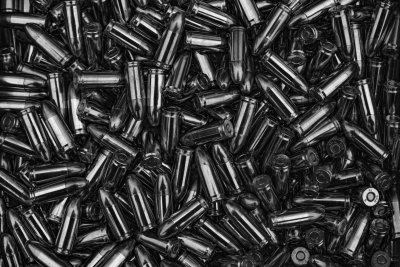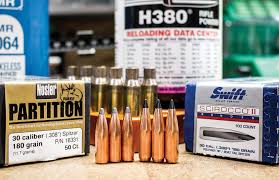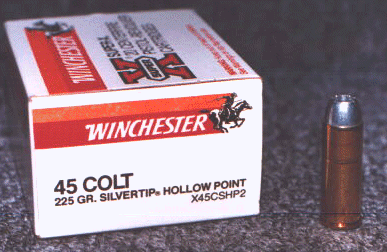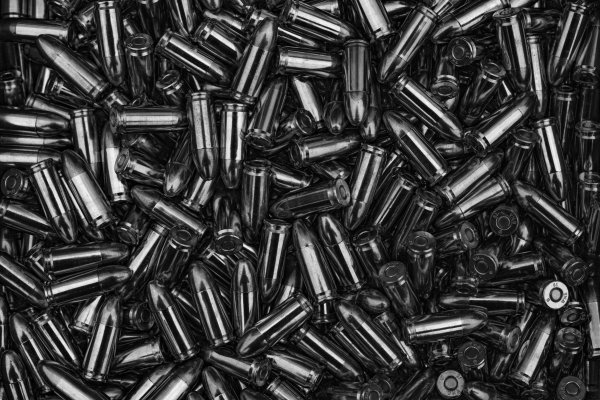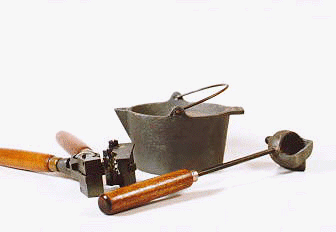
Complete Outfit: Iron Pot of Lead, Pouring Ladle, Hand Mould
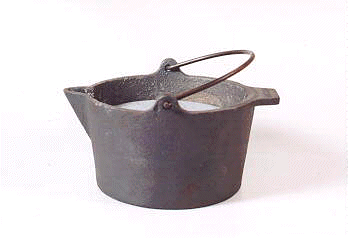
Either buy bullet lead or mix your own. I have found that tire weights have just about the right mix for pistol bullets at low velocities. It’s just a bit on the soft side. But they are available cheap or free, and you can just melt them down, skim off the metal pieces and scum, flux, and you are ready to pour. Last time I checked, it contained about 3% to 4% antimony that makes lead hard. Commercial hard-cast bullets have between 6% and 7 1/2% antimony and about 2% tin. I do NOT suggest using pure lead.
You can buy an electric furnace if you are really serious, but just an iron pot is enough. A gas stove is best for it, but you can use an electric stove to melt the lead. If the lead is good fluid, you are ready to cast some bullets.
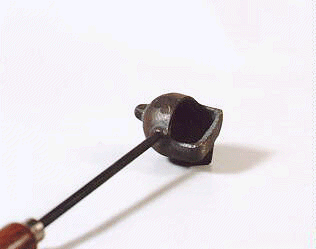
This iron ladle will work just fine. In the level position, it will hold more than enough lead to fill the mould. Get the ladle good and hot, either in the fire or you can immerse it in the moulton lead for a few minutes. If you don’t, the lead will stick to it and fill up the pouring spout hole. Assuming you have a ladle of moulton lead, you are ready to pour.
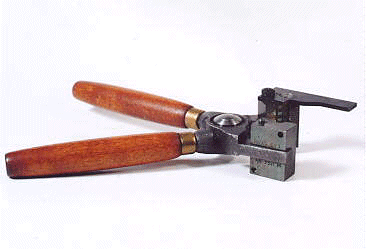
You close the mould tightly, and lock the sprue cutoff lever on top. Plan to pour several bullets into the mould to heat it up. When you first start, the mould is cold and the lead will cool so rapidly, you won’t get a good pour. Just dump the first few bullets back into the lead pot. This will heat the mould up gradually. Don’t put it in flames or hot stove eye, it can warp the mould. When each bullet is cool, you open up the mould and dump out your finished bullet. Inspect it carefully, and if it didn’t form just right, re-melt it and try again. It takes a bit of practice to get it right. It’s possible to use the lead bullets just as they come from the mould, but I don’t recommend it. For round mini-balls for muzzle loaders, it’s fine. But for pistol bullets, you really need to size and lubricate them.
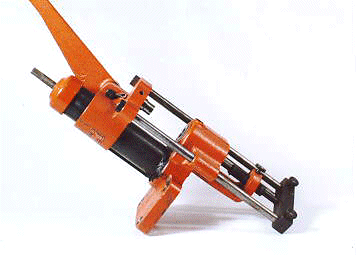
This is a Lyman bullet sizer and lubricator. When lead bullets are forced into the lower chamber, the excess outside lead is shaved off and then lubricating wax is forced into the rings of the bullet. This sizing insures a perfect fit into the case (else some buldging of the case can occur) and with the lubricant on the bullet, it will prevent “leading” of the barrel. Of course, you have to buy a sizing collet for each different caliber of bullet.

